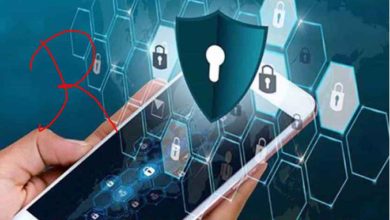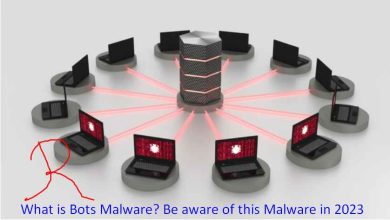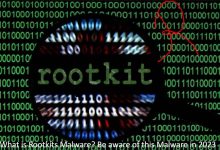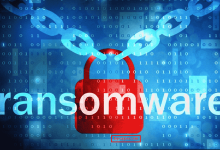
Introduction:
In the rapidly evolving digital landscape of 2023, cybersecurity is of paramount importance. With the increasing reliance on technology, malicious entities are constantly seeking new ways to compromise sensitive information. One such threat that poses significant risks to individuals and organizations alike is “Keyloggers Malware.” This article aims to shed light on what Keyloggers Malware is, its potential consequences, and how to safeguard against it effectively. Free Make Money Online
Understanding Keyloggers Malware:
Definition and Functionality:
Keyloggers Malware, also known as keystroke loggers or keyboard capturers, is a type of malicious software designed to covertly monitor and record a user’s keystrokes on a computer, smartphone, or any other digital device. This stealthy surveillance allows attackers to obtain critical information, including login credentials, credit card details, personal messages, and other sensitive data.
Types of Keyloggers:
There are two main categories of Keyloggers Malware: hardware-based and software-based. Hardware-based Keyloggers are physical devices connected between the computer’s keyboard and the system, whereas software-based Keyloggers are programs that are installed on the target device, often without the user’s knowledge…(Article Rewriter)(Plagiarism Checker)
How Keyloggers Infect Systems:
Keyloggers can infiltrate systems through various means, such as phishing emails, malicious software downloads, compromised websites, or even physical access to the device. Once installed, they operate silently in the background, recording every keystroke made by the user.
Signs of Keyloggers Malware:
Identifying Keyloggers on Your Device:
Detecting Keyloggers can be challenging, but certain signs might indicate their presence. Look out for unexplained system slowdowns, unexpected pop-ups, or suspicious processes running in the background.
Behavioral Changes:
Keyloggers can track online activities, so if you notice changes in the behavior of your social media accounts, email, or financial transactions, it might be a sign of intrusion.
Suspicious Network Activities:
Monitoring network traffic can help identify Keyloggers that transmit recorded data to remote servers. Unusual outbound connections or sudden spikes in data usage could be red flags.
Risks and Consequences:
Data Theft and Privacy Invasion:
The most apparent risk of Keyloggers is the theft of sensitive information. Attackers can gain access to personal data, compromising user privacy and leading to potential identity theft.
Financial Loss and Identity Theft:
With access to financial credentials, cybercriminals can carry out unauthorized transactions, leading to substantial financial losses for individuals and businesses.
Corporate Espionage and Cyber Attacks:
In the corporate world, Keyloggers can be used for espionage, allowing competitors or adversaries to steal proprietary information and disrupt operations.
Protecting Against Keyloggers:
Strengthening Passwords:
Using strong, unique passwords for each account makes it difficult for Keyloggers to obtain login credentials.
Updating Software Regularly:
Keeping operating systems, applications, and antivirus software up-to-date can prevent known vulnerabilities from being exploited.
Using Antivirus and Antimalware Programs:
Deploying robust security software can help detect and eliminate Keyloggers from your system.
Being Cautious with Downloads and Links:
Avoid downloading files or clicking on links from untrusted sources, as they may contain Keyloggers.
Implementing Two-Factor Authentication:
Enabling two-factor authentication adds an extra layer of security, making it harder for attackers to gain unauthorized access.
Staying Safe in 2023 and Beyond:
As technology advances, so do cyber threats. Staying vigilant and informed about emerging cybersecurity risks will be essential in safeguarding digital assets and personal information.
Conclusion:
Keyloggers Malware remains a potent threat in the digital landscape of 2023. Understanding the nature of this malicious software and implementing robust cybersecurity practices can help individuals and organizations protect themselves from potential data breaches and financial losses.
FAQs:
- Can Keyloggers infect smartphones and tablets?
- Yes, Keyloggers can infect a wide range of devices, including smartphones and tablets, making it crucial to secure all digital devices.
- How do I know if my device is already infected with Keyloggers?
- Conduct regular malware scans with reputable antivirus software and be vigilant for any unusual system behavior or network activities.
- Can antivirus software detect all types of Keyloggers?
- While most good antivirus programs can detect and remove many Keyloggers, it’s essential to keep your software updated to stay protected from new threats.
- Is it safe to use public Wi-Fi while protecting against Keyloggers?
- Public Wi-Fi can be risky, as it may expose your device to potential attacks. Using a virtual private network (VPN) can add an extra layer of security.
- Can hardware-based Keyloggers be detected easily?
- Hardware-based Keyloggers can be more challenging to detect, as they don’t leave traces in the system’s software. Regular physical inspection of the device may help identify them.





